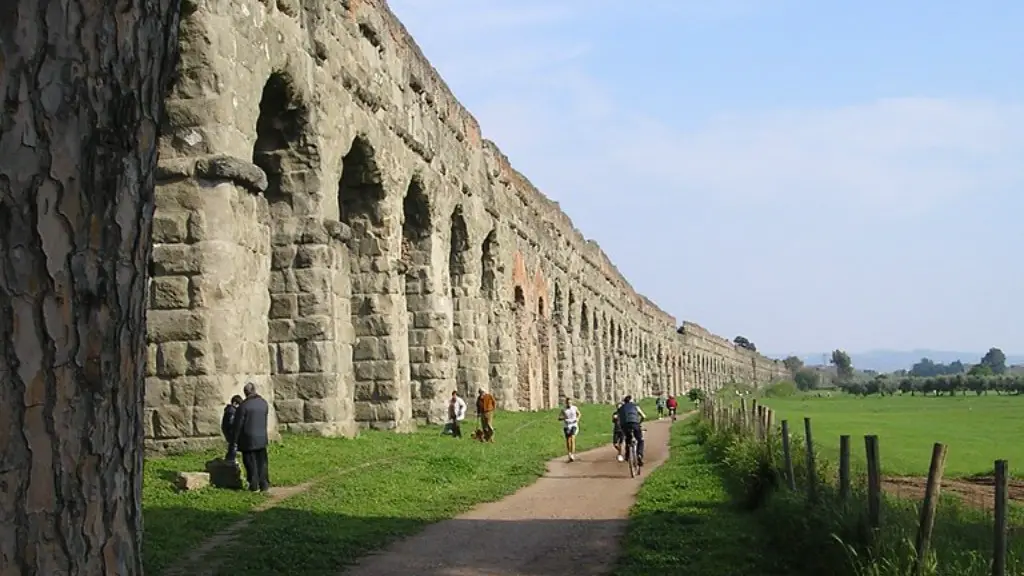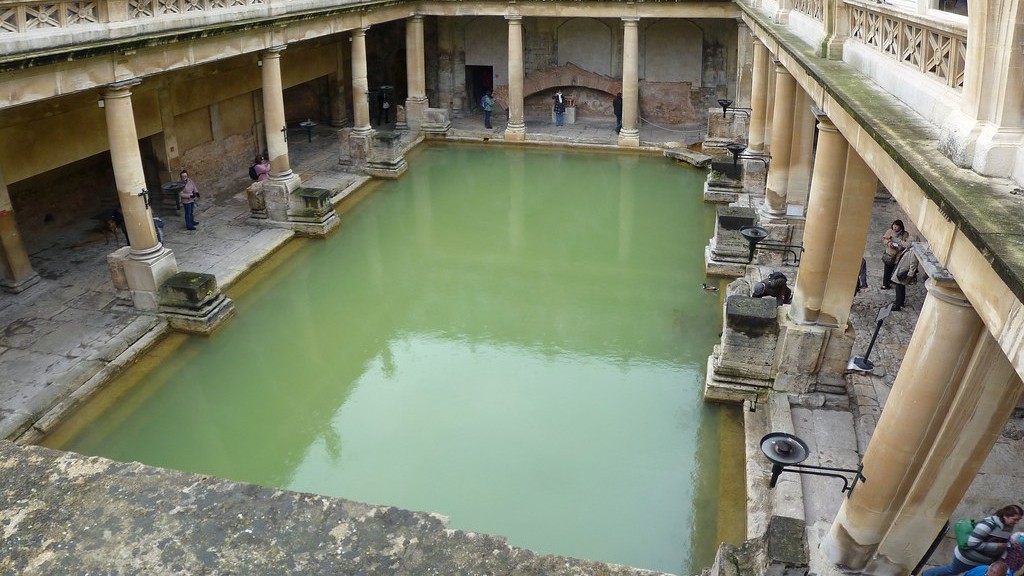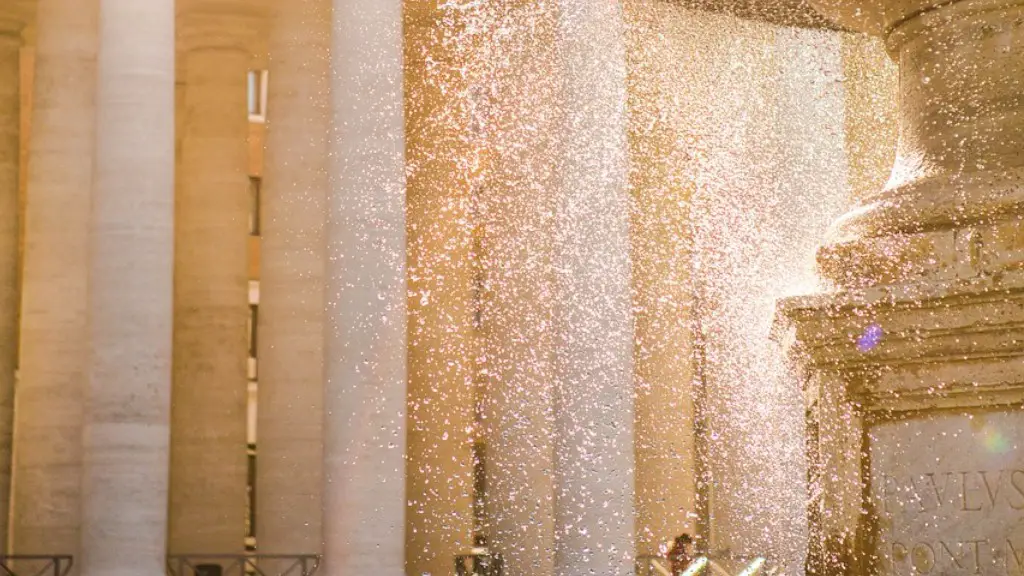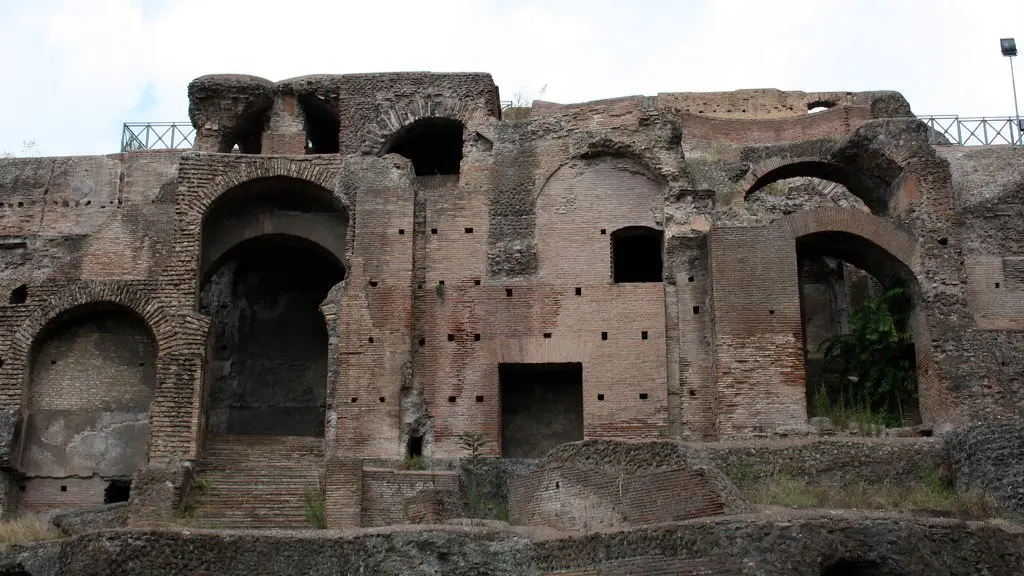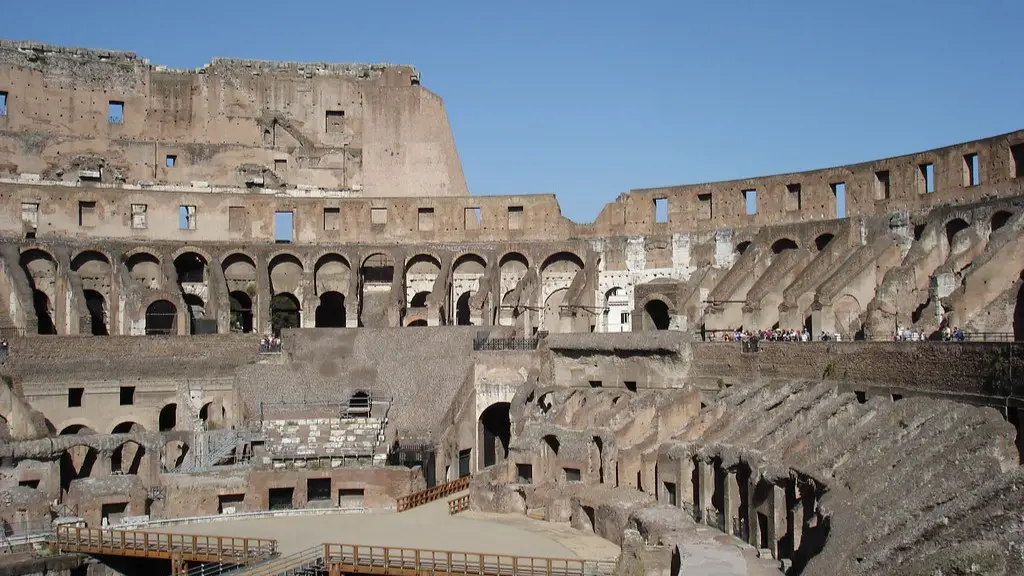What Did Ancient Rome Look Like?
Ancient Rome was a bustling city at the center of a vast Roman Empire. It was marked by grand and splendid architecture, immense wealth, incredible political prestige, and great cultural and religious significance. As one of the largest cities in ancient civilization, Rome served as an inspiration and example of grandeur, power, and greatness for centuries. Even centuries after it fell to invaders, people were still talking about how great the city was, how it served as the momentous capital of not only the Roman Empire but also of Western Civilization.
Ancient Rome was home to millions of people from all walks of life. The population was a mixture of wealthy aristocrats, middle-class citizens, and the working poor. The streets were crowded and bustling with activity. Markets were full of activity, with merchants selling food, clothing, pottery, and other everyday items. In the wealthier parts of Rome, there were public baths and theatres, gardens and monuments. In the poorer parts of the city, people crowded together in tenements or worked in the various shops and businesses, such as metalworking, marble-cutting, and textile production.
The architecture of Ancient Rome was both distinctive and awe-inspiring, with a number of impressive and grand structures still standing today. Many of the grandest monuments and architecture, including the Forum Romanum, the Colosseum, and the Pantheon, have withstood time and remain largely intact. The Romans were also known for their complex network of aqueducts, which allowed them to bring fresh water from distant sources for use in the city.
The Romans were a deeply religious people and the city of Rome was home to the most powerful gods in their pantheon. Temples and shrines to these gods and goddesses were scattered throughout the city, and religious ceremonies and festivals were held regularly. One of the most famous temples was the Temple of Jupiter Optimus Maximus, located on the Capitoline Hill, which served as a symbol of Rome’s power and authority.
The city of Rome was also famous for its grand amphitheatres, where gladiatorial games, plays, concerts, and other events were held. One of the most famous was the Colosseum, which could seat up to 50,000 spectators. This structure is still standing today, a testament to the grandeur of the Roman Empire.
Rome also had a vibrant cultural life. It was known for its art, its literature, and its music. There were public libraries, art galleries, and theatres throughout the city, as well as an immense amount of festivals, parades, and other events. Everyday life in Rome was full of activity and entertainment.
In short, Ancient Rome was a grand and majestic city. It was the center of a vast and powerful empire, a place of awe-inspiring architecture and grandeur, and a place full of life, culture, and entertainment. Centuries after its fall, Rome is still celebrated and remembered as one of the ancient world’s greatest cities.
Political Significance of Ancient Rome
Ancient Rome was the center of the most powerful empire of its time. The Roman Empire was an incredible political and military superpower, stretching from the North Sea to the Sahara, from the Atlantic Coast to the Middle East. It was a place of immense wealth, power, and prestige.
In the capital of Rome, there were two major political institutions: the Senate and the Assembly. The Senate was made up of a hundred members known as patricians, who were usually wealthy aristocrats. The Assembly was open to the citizens of Rome and was therefore a much more democratic institution. Here, citizens were able to determine who should serve in the Senate.
The government of Rome was headed by two consuls, who were elected by the citizens every year. Under the consuls were the praetors, who served as judges, and the quaestors, who had financial responsibilities. Rome was also home to other powerful political bodies such as the Senate, the Centuriate assembly, and the Plebeian Council.
The politics of Rome were incredibly complex, with a great deal of power and influence held by a small number of aristocrats. Despite this, Rome was the center of the most powerful empire of its time, with great political, military, and economic power. What’s more, its political system provided a model for later Western democracies.
Cultural Life in Ancient Rome
Ancient Rome was also known for its vibrant cultural life. It was a city full of art, literature, music, and entertainment. One of the most famous writers from this time was Marcus Tullius Cicero, a lawyer and politician who wrote about government, philosophy, and literature. Other famous authors from Rome include Virgil, Ovid, and Livy.
The city was also known for its art. They were heavily influenced by the Greeks and created sculptures, mosaics, and frescoes, many of which can still be seen today. Ancient Rome was also known for its music. Musicians created and performed a variety of musical styles. There were also festivals, parades, and other entertainment events throughout the city.
The Romans were also heavily involved in sports, such as chariot racing, horse racing, and gladiatorial games. These events were incredibly popular and thousands of people would gather in the city’s amphitheatres to watch the competitions. The most famous of these was the Colosseum, which could seat up to 50,000 spectators.
Overall, it can be said that Ancient Rome was a place of immense culture, art, and entertainment. Its citizens were renowned for their creative output, and the city was home to some of the most famous writers, musicians, and artists in the ancient world.
Religious Significance of Ancient Rome
The Romans were a deeply religious people, and the city of Rome was home to some of their most powerful gods and goddesses. As the center of the Roman Empire, the city also enjoyed an immense amount of power and influence over religious affairs. The gods and goddesses of the Roman pantheon were worshipped in temples and shrines throughout the city.
Rome was also home to many festivals and religious ceremonies, which took place in honor of the gods. Some of the most famous of these was the festival of Saturnalia, a winter solstice celebration that was marked with feasting, revelry, and gift-giving. Other important festivals included the feast of the gods and the festival of Apollo.
In addition, Rome was home to some of the most influential religious and philosophical movements in the ancient world. These included the cults of Mithras, which were popular among Roman soldiers, and the Stoic and Epicurean philosophies, which were popular among the Roman intelligentsia.
Overall, Ancient Rome was a major center of religious tradition and a place of immense importance for the Roman Empire. It was the home of powerful gods and goddesses, and its religious ceremonies, festivals, and movements were a major part of its cultural identity.
Economic Power of Ancient Rome
Ancient Rome was an incredibly wealthy city and the center of a vast and powerful empire. This wealth and power allowed the city to become a center of trade and commerce. Merchants from all over the empire came to Rome to sell their goods, and Rome soon became a major hub of international trade. This included a thriving slave trade, as slaves were brought to Rome from all over the world, especially parts of Africa.
In addition to trade, Rome was also known for its extensive network of roads and aqueducts. These roads allowed for rapid and efficient transportation of goods, as well as for military forces, and the aqueducts provided the city with a reliable and abundant supply of fresh water. The huge network of roads and aqueducts put Rome in a far better position than any other city in the ancient world.
Rome was also the center of finance and banking in the Ancient World. Its banks provided loans to individuals, businesses, and governments, and it was also home to some of the earliest known forms of insurance. Rome was also the center of the international currency system, with the first use of a standard gold and silver coinage. This system was so successful that it remained in use for centuries.
Overall, it can be said that Ancient Rome was a major center of economic activity and power. Its position as the center of the Roman Empire, and its extensive trading, banking, and transportation networks, allowed it to become an economic superpower. This economic strength helped the city to maintain its political and social power for centuries.

